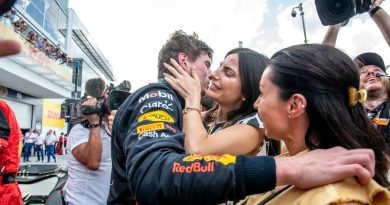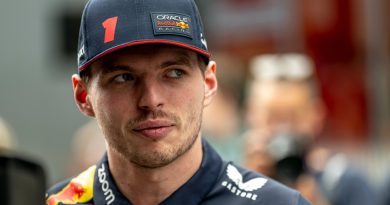While nine teams sweated over overheated tires during the Miami Grand Prix, McLaren cruised effortlessly through the heat.
But in the race itself, McLaren was in a league of its own.
According to Schmidt, the team masters tire management better than anyone else.
Regardless of the tire type, McLaren manages to keep the temperature in the ideal range, even when their rivals’ tires have long since overheated.
In the sprint race on the drying track, McLaren was the last team to switch to dry-weather tires.
Here, Lando Norris also received help from a Safety Car after Fernando Alonso’s crash.
But even then, it was clear that McLaren had the upper hand.
In the actual Grand Prix, McLaren pulled away significantly.
With medium tires, they were consistently faster than Verstappen, by up to 1.3 seconds per lap.
“It looked like Verstappen was in a Formula 2 car,” Schmidt remarks.
Once McLaren gets ahead, they are untouchable.
Secret Braking Trick Behind the Success
According to Schmidt, McLaren has a weakness in qualifying, where the car’s suspension and aerodynamics – particularly anti-dive and anti-squat – make the front axle less responsive.
Lando Norris has previously complained about this, while Oscar Piastri handles it better.
But once the race begins, it becomes an advantage.
The real breakthrough might lie in the brake drums.
McLaren has adjusted the air intake and material selection around the brakes to manage heat distribution.
Aluminum or special heat-resistant materials, according to Schmidt, can be used to keep the brakes warm and the tires cool.
Schmidt believes that former Red Bull chief designer Rob Marshall is behind the trick.
He left Red Bull in 2023 and has since played a key role at McLaren.
Marshall is also linked to the team’s flexible wings – and now to the intelligent brake design.
At Red Bull, they’re desperately trying to uncover the secret.
Thermal cameras show that McLaren manages to keep certain components significantly cooler than their rivals.
But no concrete proof has been found yet.
Schmidt believes the difference cannot be caught up with this season, and perhaps not even next season.
The brakes will remain the same in 2026, and therefore McLaren’s solution could be just as effective there.
This leaves their rivals with one pressing question:
How do they do it?
However, McLaren’s dominance varies with the track.
At places like Suzuka, where tire wear is lower, the differences are reduced.
But on hot tracks like Miami and Imola, where Pirelli uses extra-soft tires, McLaren maximizes the potential of their technical finesse.
Source: F1maximaal.nl




